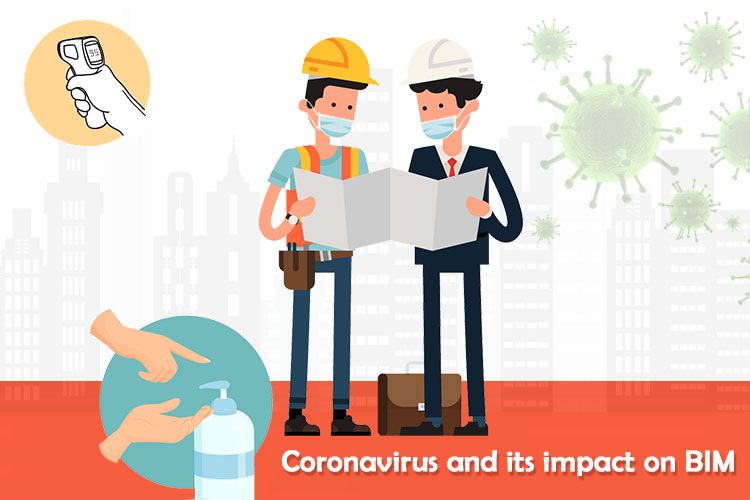COVID-19 and its impact on BIM

As building sites all over the world gradually re-open after lockdown, it’s becoming increasingly clear that a fast return to business as usual seems to be unlikely for the industry. In order to prepare and define what the future looks like the leaders will have to make some bold moves. With benefits such as visualization and collaboration, synchronization of design and construction planning, conflict detection, and cost reduction, BIM technology has emerged as a clear frontrunner. The forthcoming analysis includes the specific benefits of BIM in the new COVID 19 scenario.
1. BIM for Collaboration and Virtual Planning:
Construction Companies which were already using the Intelligent 3D model found themselves at a definite advantage during the lockdown as it enabled them to continue with their work even though it was not possible to meet in person. And with many companies now asking a portion of their workforce to work from home for the for the foreseeable future, demand for BIM Services will only increase. Within BIM sits its key element of success – coordination. Virtual 3D modelling makes it possible to prepare, keep and update all necessary reports for planning and implementation of the project. It thus allows for greater flexibility to make necessary changes as well as reduces collaboration time and error. It ensures that nothing is missed, there are no duplications and everyone involved can view and edit the same vital information even though they are not in the same location.
Additionally, from a marketing perspective it aids the end user to understand the true essence of the final project in a fraction of time. The complexity and detail that are involved in a BIM Model makes it possible to see, feel and experience the project, without being physically present. With people trying to minimize physical interactions, BIM is the easier and a safer way forward.
2. BIM for Scheduling and On-site risk assessment
BIM offers an option to link the 3D digital model with an added dimension of time or scheduling. This 4D Scheduling makes it possible to visualize start and finish date for the supply and installation of various components of construction. By providing this timeframe each worker effectively knows where they are working on and these schedules can be modified to not just avoid overlap of services but also overcrowding in the same physical area. Supervisors can track workers in real time, provide dynamic solutions to unforeseen issues and use alerting services to inform the workers.
Moreover, thermal sensors integrated with the worker’s uniform can be the solution to the most pertaining problem of COVID19 – health of workers and the spread of virus. These sensors can monitor any drastic changes in the workers’ health and make it possible to implement quick segregation therefore avoiding mass transmission.
3. BIM for Sustainability:
COVID has played on the human conscience making the cry for sustainable even louder. With the ability to analyze and evaluate green buildings and to access information to make sustainable decisions Intelligent 3D Modelling is the key to achieving environmental goals. Right from the design phase it offers complete transparency making it possible for everyone involved to get a summary of what materials and products are being used, and their environmental impact. Clash Detection also helps foresee errors in design and hence reduces the amount of waste generated by the project. With 6D and 7D BIM, we can minimize fuel consumption and noise levels on site. Finally, with no construction defects it eliminates over ordering and also allows cut materials be reused and recycled.
Thus, the evidence is clear – BIM is changing the way the industry operates. It essentially affects the way people think and operate, something which is quickly becoming a byproduct of the COVID19 scenario.